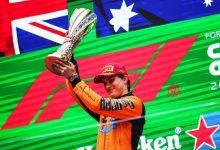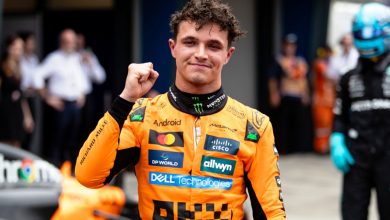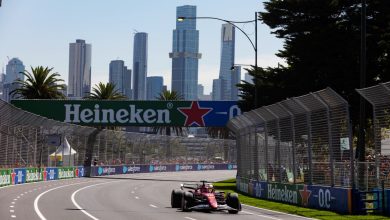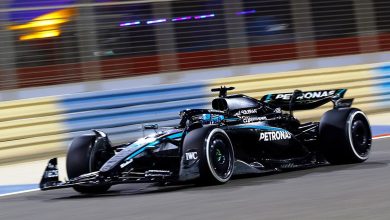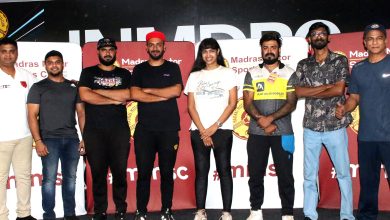Pirelli preview for Silverstone: Hard, Medium tyres for race
Milan, 24 June 2013: Pirelli will bring the P Zero Orange hard and P Zero White medium tyres to Silverstone for the British Grand Prix: effectively a second home race for the Italian squad, whose UK logistics hub at Didcot is less than an hour away from the Northamptonshire circuit.
There will also be two sets per car of the same prototype hard tyres seen in Spain, available for use in Friday’s two free practice sessions only.
Silverstone is one of the oldest and fastest circuits on the Formula One calendar, having benefitted from extensive revisions over recent years. The rapid circuit layout means that plenty of energy is put through the tyres, with a consequent effect on wear and degradation. In the past, teams have used strategy to their advantage on this track, resulting in some close finishes even with different tactics being employed.
Paul Hembery: “Silverstone, with its very high average speeds and flowing series of corners, presents an extreme contrast to Canada three weeks ago – which was much more stop and start. Like Canada, it’s a circuit that takes a lot out of the tyres, but for very different reasons. We’ve brought the two hardest compounds to the British Grand Prix because of that, with a new bonding process connecting the tread to the steel belt, which is designed to eliminate the isolated delamination issues to reach a unanimous agreement about this: however, we do still have that possibility on stand-by should it be required in future. During free practice at Silverstone we will have the same prototype hard seen earlier this season. The actual construction of the tyre won’t change, as the teams weren’t able tyre available that we tried out on Friday in Spain, aimed at even greater durability than our current hard. This is in order to give the teams the chance to test this new compound on a different track to collect more data. Of course another important factor at Silverstone is the notoriously variable British weather: it would be no big surprise to see the Cinturato Green intermediate and Cinturato Blue full wet brought into play at some point. For that reason, it’s quite hard to predict the number of pit stops on race day. Last year we saw a two-stop strategy in dry conditions after two wet days but this year the compounds are softer, so if it stays dry we could have between three and four stops. We should be in a position to make a more precise forecast after free practice. Finally, and most importantly, we would like to pass on our sincere condolences to Allan Simonsen’s family and friends following the terrible accident at Le Mans last weekend. We were Aston Martin Racing’s partners for many years, and we can only imagine what they must be going through now.”
Jean Alesi: “The real thing to watch out for in Silverstone is always the weather: absolutely anything can happen, and it’s often both wet and dry. You need to think on your feet. It’s a demanding circuit on the tyres, not so much because of traction and braking, but more because of the high levels of downforce that are always pushing down on the car, as a result of the very high speeds. This is what creates the tyre wear at Silverstone and so the hard and the medium tyres are a good choice. As a driver, I’ve been on the podium at Silverstone many times and always enjoyed it, in various configurations. The latest alteration with the new pit complex is a very impressive investment, but for me it’s a shame they took away Bridge corner: that used to be a fantastic challenge. In any case, Silverstone will always be a real drivers’ circuit, so I think we can look forward to a good race, less politics, and some interesting strategies. It’s always a pleasure to come here because the British fans are so knowledgeable and passionate about Formula One. There’s a real culture of motorsport in Great Britain, which I think everybody appreciates.”
The circuit from a tyre point of view:
While big speeds and high levels of lateral energy are the key characteristics of Silverstone, there are also some slower and more technical parts of the circuit where it has been modified in recent years. In those areas combined acceleration is particularly important. This happens when the driver is steering and accelerating at the same time on the exit of a corner: the work of the tyre is crucial here.
Many parts of the asphalt at Silverstone are new, with the new asphalt less bumpy and abrasive than the older sections. Abrasive asphalt increases grip, but also adds to levels of wear and degradation.
Last year a variety of strategies were seen following a wet qualifying session, which meant that the drivers could start on whichever slick compound they chose. Red Bull’s Mark Webber won the race from second on the grid, having started on the soft tyre before completing two stints on the hard tyre. Ferrari’s Fernando Alonso was on pole but finished second after doing the opposite: two initial stints on the hard tyre, then one on the soft tyre.
Further information about Silverstone and the demands it places on tyres, as well as more information about how tyres are allocated for each race, can be found on a 3D animated video starring Pirelli’s Racing Manager Mario Isola. This is copyright-free for media use on Pirelli’s Formula One website: www.pirelli.com/f1pressarea
Technical tyre notes:
High-speed stability is particularly important at Silverstone, with braking energy extremely low. Downforce levels are medium: a compromise between ensuring enough aerodynamic grip to negotiate the fast corners as quickly as possible and eliminating drag on the straights.
Lateral accelerations on the tyres are among the highest of the season, peaking at 5g. This means that the surface temperature of the tyre can exceed 110 degrees centigrade, towards the very top of its working range.
Silverstone is not one of the easiest circuits to overtake on, meaning that qualifying high up the grid and selecting a strategy that can help gain track position is vital. The new infield arena section after Abbey curve was inaugurated in 2011 to help promote overtaking.
The tyre choices so far:
| PZero Red | PZero Yellow | PZero White | PZero Orange | |
| Australia | Supersoft | Medium | ||
| Malaysia | Medium | Hard | ||
| China | Soft | Medium | ||
| Bahrain | Medium | Hard | ||
| Spain | Medium | Hard | ||
| Monaco | Supersoft | Soft | ||
| Canada | Supersoft | Medium | ||
| Great Britain | Medium | Hard |
Meet the Pirelli F1 Team: Matteo Albucci, F1 Travel Co-ordinator
Matteo is Pirelli’s Formula One travel co-ordinator, responsible for moving Pirelli’s team of 50 or so people all the way around the world. He’s an Italian who was born and studied in Florence – the city of Leonardo da Vinci – but he currently lives in Oxford, close to Pirelli’s UK logistics hub in Didcot. His background has always been in travel and tourism but now he has taken up a full-time role within the Italian firm. Like da Vinci, Matteo has to be a true Renaissance man: his wide-ranging role involves organising flights, hotels, hire cars and transfers for all Pirelli F1 personnel, as well as travel for GP2 and GP3 tests and races, not to mention the FIA GT Championship and Brazilian stock cars too. Outside of work, he perhaps surprisingly enjoys travel, but he also likes meeting friends and going to the gym. He describes himself as a pretty normal type of person – just don’t look for him on Facebook, as you won’t find him there…
Other news from Pirelli:
The Pirelli-backed GP3 Series had a stand-alone race in Valencia two weeks before the British Grand Prix. America’s Conor Daly won the opening race to lead home an ART Grand Prix one-two, while Robert Visoiu took his maiden win for MW Arden in race two. The medium GP3 compound was used, at the Ricardo Tormo permanent circuit.
The latest round of the Italian Rally Championship, the all-gravel Costa Smeralda Rally, took place on the island of Sardinia last weekend. Pirelli’s multiple champion Paolo Andreucci made a one-off appearance in a Peugeot 207 S2000, switching from his usual Peugeot 208 R2, and won the event by nearly a whole minute.
The Pirelli-backed Lamborghini Blancpain SuperTrofeo, billed as the world’s fastest one-make series, is heading to North America. The five round championship, for the race version of the Gallardo, gets underway from July 5-6 at Lime Rock, during the American Le Mans Series meeting there.
ends

